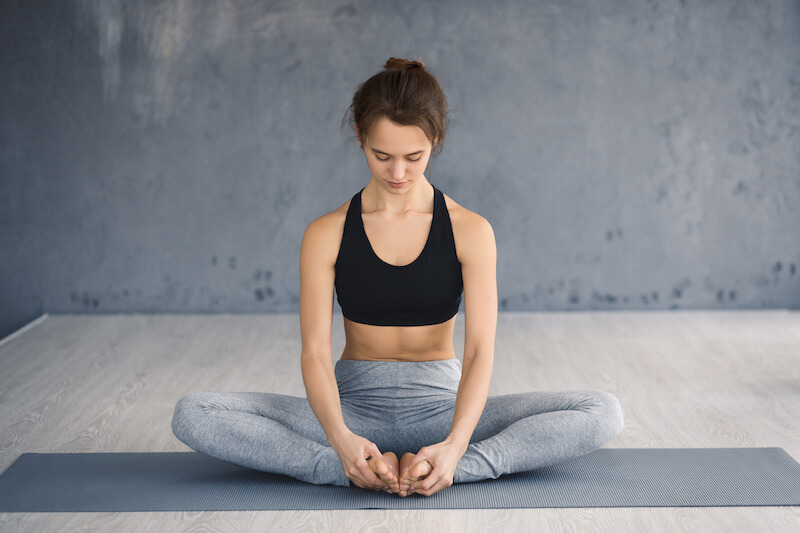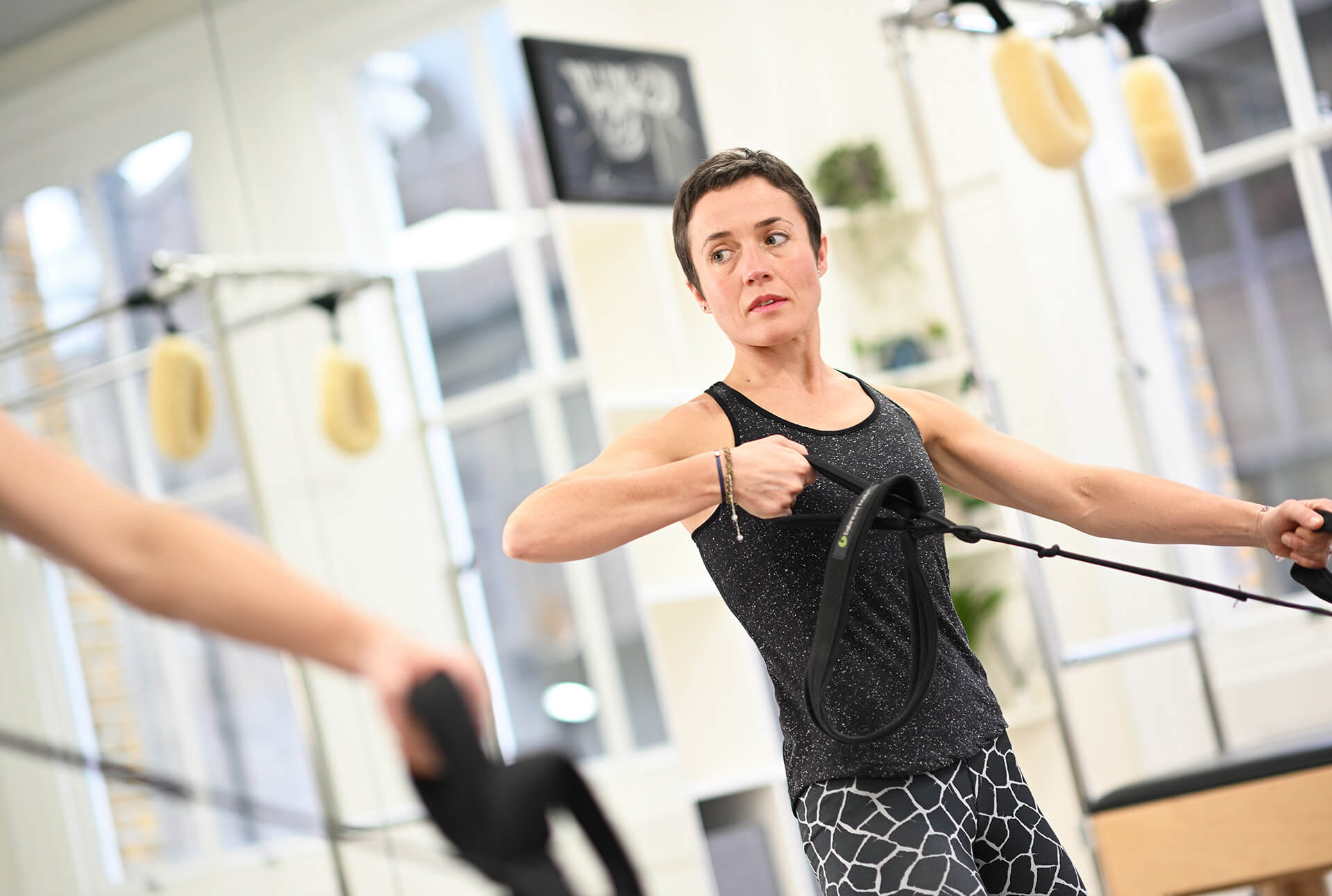When it comes to Pilates there are some common mistakes that both seasoned pros and newcomers are prone to making. These mistakes are not always obvious and can be easy to ignore. But, little as they might be, they can still stop you from getting the full benefits of Pilates. This means that figuring out where you’re going wrong in class – as well as learning how to correct yourself – is so important.
The CP team are experts at spotting and correcting issues with form and execution. Here they talk us through how to avoid these 6 mistakes in Pilates class.
Use this list as a guide and you’ll be sure to get more from your next session.
1. Over-recruiting your muscles
Everything from clenching your bum, “zipping up” your pelvic floor and sucking in your stomach are frequently made mistakes.
Over-tensing your muscles might make you feel like you’re working hard. However, doing so will actually only restrict your movement and interfere with the natural functions of your body. Plus, to keep them healthy, muscles need to contract and relax.
There is no need to engage your muscles to this extent to get the benefit of the Pilates exercises. Provided you have good alignment, and the support of an experienced instructor, the right muscles should activate as you move.
2. Restricting your breath
Breathing well is essential for Pilates. This is because healthy breathing habits facilitate movement, so a free-flowing (rather than restricted) breath is vital.
However, if you’re over-recruiting your abs and holding in your stomach your breathing will suffer. To prevent this from happening, focus on breathing fully into your ribs and sides throughout your Pilates class.

3. Performing exercises too quickly
Rushing through movements is an easy mistake to make, but doing so will mean you’ll be missing out on the mindful benefits of Pilates.
Slowing the movement down will also generally make exercises more challenging. In the Pilates roll up, for example, slowing your movement down will prevent you from relying on momentum and instead force you to engage the right muscles.
4. Not focusing on your movement
Without concentrating on your movement, Joseph Pilates warned, the benefits of the exercises can be lost.
Moving with intention is a vital part of Pilates and will help you engage the right muscles. So, whenever your mind wanders in class, bring it back to your body. More specifically, focus on what you’re experiencing internally and what is happening to your muscles and bones as you perform each Pilates exercise.
5. Not balancing your movement
It’s easy to focus on the exercises that you enjoy more and rush through (or neglect) the ones you find more challenging. However, doing so will mean you build up strength in one area and not another creating imbalances in your body.
For example, Pilates abdominal exercises might feel natural (and fun) to perform. However, if you’re hunched over your desk all day, repeatedly working your abdominals will worsen your posture.
Instead, desk-bound types need to find a way of creating balance. Usually this means focusing on exercises that mobilise and strengthen your back to compensate for the hours spent sitting in a hunched position. Extension-type moves like the Pilates “Swan” or this simple spine extension move are good examples of these.

6. Forgetting the basics
As you move through a class it’s easy to forget the fundamentals of Pilates, like focusing on your alignment.
Losing your “neutral pelvis”, for example, when you’re in the middle of a dynamic exercise is a common mistake. Without it, though, you won’t reap the benefits of Pilates for your posture or improve your efficiency of movement.
So, remember to bring attention to your spine throughout the class and to keep checking in with it, even as the tempo in class builds. Practising the simple pelvic tilt exercise outside of class can also help with reinforcing your neutral alignment.
Pilates mistakes happen to everyone. But it’s particularly easy to get things wrong in big group classes where you won’t get much individual attention.
For this reason, starting with 1-2-1 sessions can be helpful. You can contact us about 1:1’s or simply book your initial session!
Education is key:
These blogs are designed to give information to everyone, however, it is important to remember that everyone is different! If you have not seen one of our therapists and have any questions about injuries, what you have read or whether this may be useful to you, please just ask. We are more than happy to help anyone and point you in the right direction. Our biggest belief is that education is key. The more you understand about your injury, illness and movement, the more you are likely to improve.



